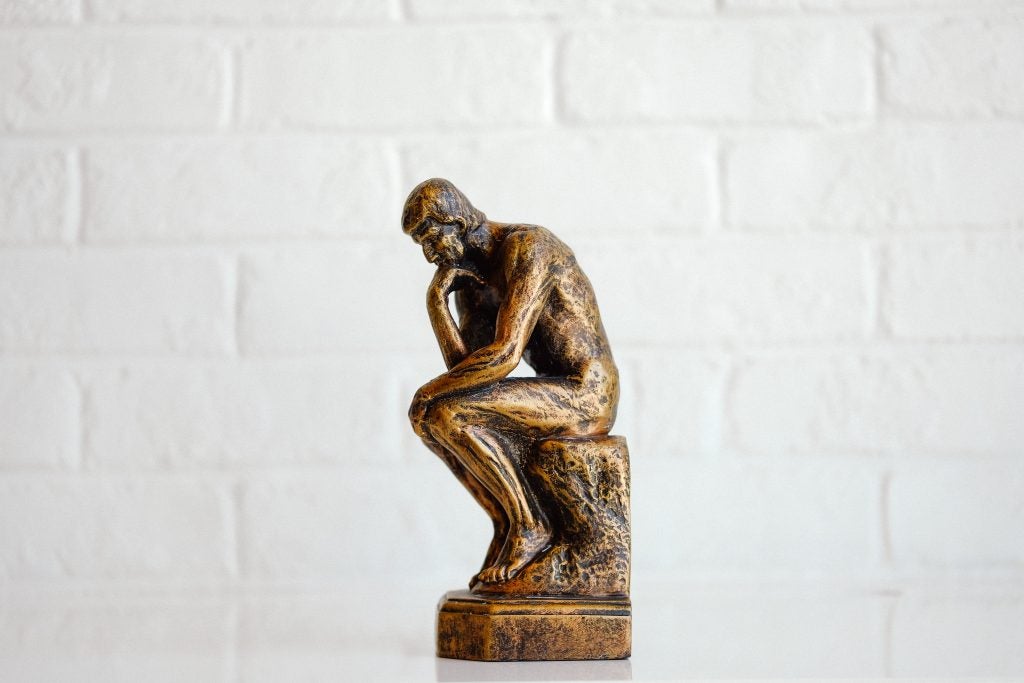
The Kama Sutra is a classical Hindu text relating to the art of human sexual behavior and pleasure. The dense text was originally written in traditional Sanskrit by Vatsyayana, an Indian philosopher and sage who is believed to have lived between the first and sixth century of the Common Era.1 It has since been translated into many languages with varying commentaries.2 The Kama Sutra was originally intended to be a compilation of sexual knowledge rather than a guide, but today many debate whether the Kama Sutra should best be considered a “lovemaking manual” or an ancient “book of science.”3
Table of Contents
Contents of the Kama Sutra
The Kama Sutra is separated into seven sections, each containing multiple chapters:

- Part I: Introduction
- Part II: On Sexual Union
- Part III: About the Acquisition of a Wife
- Part IV: About a Wife
- Part V: About the Wives of Other People
- Part VI: About Courtesans
- Part VII: On the Means of Attracting Others to One’s Self
The chapters within these sections focus on social norms, eroticism, love customs, and compatibility beliefs of the time.
Themes in the Kama Sutra
The goal of the Kama Sutra is to introduce various ways of achieving happiness and pleasure through the harmony of body and soul.4 The text focuses on the coordination of Dharma, Artha, and Kama—the main goals of everyday life in many Indian philosophies.2
- Dharma: regarding virtue or religious merit.1
- Artha: regarding worldly wealth and prosperity.1
- Kama: regarding pleasure or sensual gratification and desire.1
These philosophies relate to both sexual conduct, and general ways of living that are intended to increase pleasure. The text introduces practical techniques to improve pleasure, and many translations include visuals, exercises, and meditations.4 For example, there is a section describing different sex positions for intercourse, and other sections that highlights the importance of other sexual acts including touching, kissing, embracing, biting, intercourse, and oral sex. The book explores these practices deeply and discusses the benefits and techniques associated with each one.

The Kama Sutra also mentions a variety of arts that should be studied along with the text—including, singing, dancing, and crafting—as well as attitudes and actions that should be taken before and after any sexual encounter or courtship. For instance, the Kama Sutra emphasizes the importance of loving affection and embracing for a pleasurable sexual experience.2
Although the text mentions a variety of sexual encounters including homosexual activities, group sex, and masturbation, it still tends to take a patriarchal approach and emphasize heterosexual relationships and differing gender roles between men and women.1 The book was intended for upper-caste men and there are full sections of the Kama Sutra relating to the “duties of a wife” and arranged marriages. The book says that women should be beautiful virgins that are born of wealthy families in order to be considered suitable wives. The book also states that women are supposed to stay in the house and conform to all of their husband’s wishes. This patriarchal narrative can still be seen in the wide class differences between castes in India today.8
The Kama Sutra in Modern Culture
Some of the translations of the Kama Sutra have slightly altered the original themes in order to make the text more relevant to modern culture.5 The translated Kama Sutra introduced alternatives to many traditional ideas about sexuality within Western culture, and it encouraged a culture of more sexual tolerance and exploration.6 The text has also inspired many new ideas of sexuality and intimacy. However, in the late 1800s when the Kama Sutra was being republished in Europe, there were concerns that the book would “contaminate” traditions with the inherent eroticism. The translated Kama Sutra was subsequently deemed prohibited and placed with books considered to be taboo and pornographic in nature.5 Eventually, the book was widely considered a standard work on love in Sanskrit literature, and the popularity and availability increased. It became popular in the United States when in the 1960s, during the peak of the sexual revolution.1
The feminist movements around the world have cited the Kama Sutra as both support for women’s sexual rights, and an outdated double standard. Although proponents of feminism support the book’s focus on the desire and pleasure of women, the book contradicts more modern views of gender roles and equality by focusing on the subordinate role of women to men. In the Kama Sutra, it is stated that it is the man’s duty to teach and court the woman, and the woman shall accept any misconduct or wishes from her husband. In the past, these gender roles and differences were upheld in many societies, but today it is much more acceptable for women to take a more dominant role in relationships, the workforce, and the home. Despite these beliefs, there have not been many notable feminist interpretations of the text.8
Although the premises of the original Kama Sutra do not necessarily align with modern philosophies of love—such as the focus on binary gender roles—the Kama Sutra is still often referenced for its information regarding general pleasure tantric sexuality. Tantric sexuality is an ancient Hindu energy practice designed to increase intimacy and a mind-body connection. The tantric body is considered a fundamental vehicle for spiritually, and can be formed by practicing various techniques such as ritual, yoga, and reading.7 Today, there are many modern guides and books on how to practice tantric sex with a partner. Many themes of tantra and the Kama Sutra are highly valued today, such as being affectionate after love making, bringing a partner flowers, and holding hands.7
Concluding Remarks

Although the Kama Sutra may be considered outdated by some, the concepts introduced in the text provide fascinating insight to the original customs and thoughts regarding sexuality in historically Hindu cultures. Despite the more modern approach to gender roles, the Kama Sutra has continuously been used as a medium to challenge certain strict, traditional beliefs and has provided new methods for individuals to experience a more exciting and intimate love life.
References
- Mallanaga, Vatsyayna. Kama sutra. New Line Publishing, 2004. Web. 30 May 2017.
- Burton, Richard F. The Kama Sutra of Vatsyayana. WingSpan Press, 2009. Web. 30 May 2017.
- Betageri, Ankur. “Books at a Glance.” Indian Literature, vol. 55, no. 2 (262), 2011, pp. 222–224. Web. 30 May 2017.
- Smith, Kimberley. “Sex and the Perfect Lover: Tao, Tantra, and the Kama Sutra (Book).” Library Journal, vol. 128, no. 20, 15 Dec. 2003, p. 145. EBSCOhost. Web. 30 May 2017.
- Grant, Ben. “Translating/The Kama Sutra.” Third World Quarterly, vol. 26, no. 3, Apr. 2005, pp. 509-516. EBSCOhost, doi:10.1080/01436590500033867. Web. 30 May 2017.
- Peterson, Valerie. “Text as Cultural Antagonist: The Kama Sutra of Vatsyayana.” Journal of Communication Inquiry, vol. 26, no. 2, Apr. 2002, p. 133. EBSCOhost. Web. 30 May 2017.
- Flood, Gavin D. The tantric body: the secret tradition of Hindu religion. IB Tauris, 2005. Web. 30 May 2017.
- Shah, Sonia. “A “Revised” Kama Sutra: How does it Translate? — the Complete Kama Sutra Translated by Alain Danielou.” Ms 09 1995: 76. ProQuest. Web. 31 May 2017.
Last Updated: 31 May 2017.
